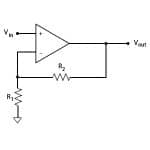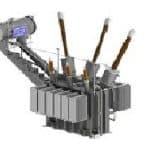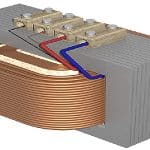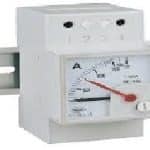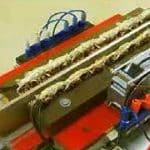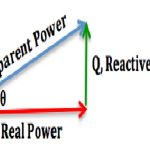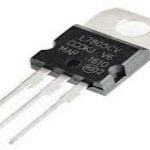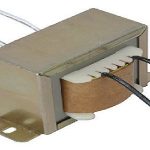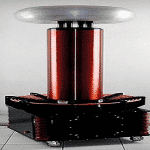An operational amplifier which is termed a high gain, DC coupled, inverting feedback amplifier was initially observed in the year 1941 by Karl D. Swartzel. In this configuration, the amplifier is designed using three vacuum tubes which results in a gain of 90 dB, and it functions in the voltage range of ±350 volts. This operational amplifier was just a single inverting type of amplifier and does not have differential inverting and non-inverting inputs. … [Read more...]
Shunt Reactor : Working, Types, Characteristics & Its Applications
A reactor or line reactor is a coil, used to protect the electrical devices & power transformers from the generated reactive currents throughout the fault conditions within the transmission. This reactor is generally made with an inductive material. The main function of the reactor is to restrict the reacting current that can harm the power transformer throughout the distribution or transmission within the substation. There are different types of … [Read more...]
Core Type Transformer : Construction, Working, Laminations, Types & Its Applications
A transformer is a voltage control device used to step up and step down the voltage in various electrical circuits. The working principle of a transformer is electromagnetic induction & mutual induction. These are classified into two types like core type and shell type. In core type transformer, the magnetic core mainly contains two limbs and two yokes whereas shell type transformer contains three limbs & two yokes. So the main difference between … [Read more...]
Moving Iron Instrument : Working, Types, Torque & Its Applications
The moving iron instrument is the most commonly used ammeter & voltmeter used at power frequencies in laboratories or switchboards. These types of instruments are designed in such a way to measure voltage & current to the accuracy required in most engineering works. As compared to any other types of AC instruments with the same accuracy & ruggedness, these are not expensive. So this article gives brief information on a moving iron instrument – … [Read more...]
What is Linear Induction Motor : Working, Construction, & Its Applications
An induction motor is a generally used AC electric motor. In this motor, the electric current required within the rotor to generate torque is attained through electromagnetic induction from the stator winding’s rotary magnetic field. The rotor of this motor can be a wound type or squirrel cage rotor. Induction motors are also called ‘asynchronous motors’ because they operate at a less speed as compared to their synchronous speed. There are different types … [Read more...]
What is a Power Triangle : Formula and Its Working
Generally, power is the capacity to do work. In the electrical domain, electric power is the amount of energy transferred to some other form per unit of time like light, heat, etc. Mathematically, it can be defined as the product of voltage and current. Consider the DC circuits, which have only one voltage source either a voltage source or a current source, so the capacitors work as an open circuit within a steady-state whereas the inductors work like a … [Read more...]
What is a 7805 Voltage Regulator : Working & Its Applications
All voltage sources cannot provide stable output because of fluctuations within the circuit. For obtaining stable output, the voltage regulator is implemented. A voltage regulator is used to create and maintain a stable output voltage which is used for DC/DC power conversion, some can perform AC/DC or AC/AC power conversion. The integrated circuits or ICs which are used for voltage regulation are known as voltage regulator ICs. There are different types of … [Read more...]
Step Down Transformer : Working & Its Applications
A Transformer is a static electrical device because it doesn’t have moving parts. The main function of a transformer is to change the electrical power from one electric circuit to another by changing voltage & current but not changing frequency. Transformers are classified into two types based on their function as a step-up transformer and step-down transformer. This article discusses an overview of a step-down transformer and its working with … [Read more...]
What is Tesla Coil : Working Principle & Its Applications
Before the invention of the Tesla coil, air-core transformers and electrical oscillations were introduced and the first invention of the tesla coil was done by Thomson Elihu in the year 1889, then after the patent rights for tesla coil was gained by Tesla in 1891. The first-tesla circuit came to known to the public as having the elements of the capacitor, high voltage transformer, spark gap, and oscillation transformer. At present, tesla coil devices … [Read more...]
What is Surge Arrester : Working, Types & Its Applications
With the evolution of the electric grid concept, engineers understood that new equipment is required for the protection of high-level voltage power devices. Devices like electrolytic arresters came into evolution during the period 20th century which is appropriate for high power requirements. Comparatively, the short-lived technology came into existence in the next 20 years. The contemporary word arrester was initially used in the period the mid-1800s … [Read more...]
